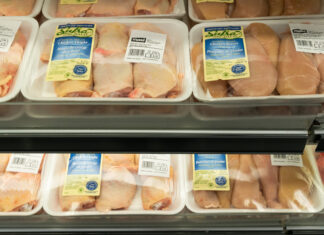Swedish researchers have developed a method for the early detection of 14 different types of cancer. The innovative technique analyzes special sugars, so-called glycosaminoglycans (GAGs), which can be found on both healthy and degenerated cells. Their structure and frequency change in the course of cancer and can be detected in blood and urine.
The team led by Francesco Gatto from Chalmers University of Technology has now presented the study results in the specialist journal “PNAS”. A total of 1260 healthy and cancer patients took part in the study.
The test is a so-called liquid biopsy, in which, in contrast to conventional biopsies, no tissue samples are taken and analyzed, but body fluids such as blood and urine are examined for specific biomarkers.
Such tests are fairly easy to carry out and can therefore also be used for types of cancer where a needle biopsy is risky, such as lung or brain tumours. However, tissue tests are clearly superior in their informative value, which is why liquid biopsies are usually only recommended as a supplement.
Under the self-imposed requirement of receiving a maximum of five percent false-positive test results in healthy people (this corresponds to a specificity of 95 percent), the scientists determined a sensitivity of 41.6 percent to detect phase 1 cancer stages using blood samples alone. After an additional urine sample, the sensitivity increased to 62.3 percent.
This means that six out of ten cancer cases could be diagnosed correctly, while the examination did not work in four patients.
The study authors highlight that analyzing GAGs could be a simple, inexpensive testing method well suited for use in mass screening. They estimate the cost would be around $50 per sample analysis. This means that the costs are around five to ten times lower than for other test methods for blood-based cancer screening.
Although it is not known exactly why the GAGs in cancer cells have a different structure than in healthy cells, Almut Schulze from the German Cancer Research Center told the Science Media Center, but using the sugar compounds as a method of detecting cancer is “exciting”.
It is also impressive “that the authors examined a large cohort”. In Germany it is hardly possible to get a comparable number of blood samples for such research purposes.
However, Schulze points out that the validity of the tests could be impaired if patients suffered from diseases such as metabolic syndrome. This interplay of obesity, high blood pressure and sugar and lipid metabolism disorders, which occurs more frequently with age, also changes the structure of the GAGs and may then lead to a false positive test. In addition, this makes it difficult to transfer it to other populations.
This is one of the reasons why the test is “still a long way from being used regularly,” said Edgar Dahl, head of molecular oncology and molecular pathological diagnostics at the University Hospital of RWTH Aachen University. First of all, “extensive validation in large prospective studies” is necessary.
“The specificity of 95 percent sounds good at first, but for a diagnostic screening test it would mean that every 20th patient would be given a false positive.” With one million people tested, this would be 50,000 people who would be unnecessarily unsettled with an incorrect cancer diagnosis would.
You only get that lucky once in a lifetime. A lottery player from Bavaria wins one million euros thanks to a special Santa Claus campaign. Only three correct ticks were enough for him.
The eagerly awaited Netflix documentary about Prince Harry and Duchess Meghan went online on Thursday morning. As the emphatically dramatic trailer suggests, it should cause a lot of fuss. All developments in the large FOCUS online live ticker.
The original of this article “Sugar molecules in blood and urine reveal tumor disease” comes from Spektrum.de.
















































